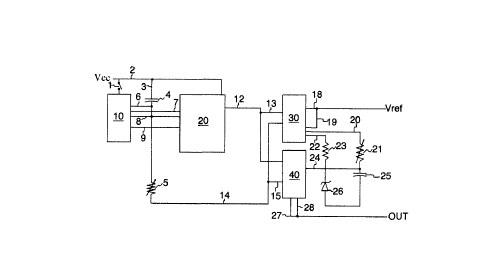Some of the information on this Web page has been provided by external sources. The Government of Canada is not responsible for the accuracy, reliability or currency of the information supplied by external sources. Users wishing to rely upon this information should consult directly with the source of the information. Content provided by external sources is not subject to official languages, privacy and accessibility requirements.
Any discrepancies in the text and image of the Claims and Abstract are due to differing posting times. Text of the Claims and Abstract are posted:
| (12) Patent Application: | (11) CA 3039987 |
|---|---|
| (54) English Title: | AUTOMATIC START AND SPEED COMMAND CIRCUIT |
| (54) French Title: | CIRCUIT DE COMMANDE DE DEMARRAGE ET DE VITESSE AUTOMATIQUE |
| Status: | Compliant |
| (51) International Patent Classification (IPC): |
|
|---|---|
| (72) Inventors : |
|
| (73) Owners : |
|
| (71) Applicants : |
|
| (74) Agent: | |
| (74) Associate agent: | |
| (45) Issued: | |
| (22) Filed Date: | 2019-04-10 |
| (41) Open to Public Inspection: | 2020-10-10 |
| Availability of licence: | N/A |
| (25) Language of filing: | English |
| Patent Cooperation Treaty (PCT): | No |
|---|
| (30) Application Priority Data: | None |
|---|
Automatic start and speed command circuit for supplying an analog start
acceleration and preset signal to an AC electric motor controlled by a
variable frequency motor and or brushed/brushless DC motor controller or
any electric motor speed control or drive which uses an analog speed
command signal input for supplying a variable analog speed command to
the controller for setting an operational motor speed. This includes
manually speed setting device such as potentiometer.
Automatic start and speed command circuit will provide a cycle start after
which will increase the command to said electric analog drive to accelerate
the motor for an allotted time to allow the controller and motor to
achieve the commanded speed at the motor, the speed command is
incrementally increased till maximum speed or set speed is
achieved.
A adjustable time base is included for each increase of command speed
to allow for tuning the start up performance of the motor. An isolated
power source is included which provides power to the circuit and is
isolated from the command signal on the drive or controller as not to
interfere with input command on the drive and/or controller.
Note: Claims are shown in the official language in which they were submitted.
Note: Descriptions are shown in the official language in which they were submitted.

For a clearer understanding of the status of the application/patent presented on this page, the site Disclaimer , as well as the definitions for Patent , Administrative Status , Maintenance Fee and Payment History should be consulted.
| Title | Date |
|---|---|
| Forecasted Issue Date | Unavailable |
| (22) Filed | 2019-04-10 |
| (41) Open to Public Inspection | 2020-10-10 |
There is no abandonment history.
Last Payment of $50.00 was received on 2020-04-27
Upcoming maintenance fee amounts
| Description | Date | Amount |
|---|---|---|
| Next Payment if small entity fee | 2024-04-10 | $100.00 |
| Next Payment if standard fee | 2024-04-10 | $277.00 |
Note : If the full payment has not been received on or before the date indicated, a further fee may be required which may be one of the following
Patent fees are adjusted on the 1st of January every year. The amounts above are the current amounts if received by December 31 of the current year.
Please refer to the CIPO
Patent Fees
web page to see all current fee amounts.
| Fee Type | Anniversary Year | Due Date | Amount Paid | Paid Date |
|---|---|---|---|---|
| Application Fee | $200.00 | 2019-04-10 | ||
| Maintenance Fee - Application - New Act | 2 | 2021-04-12 | $50.00 | 2020-04-27 |
| Maintenance Fee - Application - New Act | 3 | 2022-04-11 | $50.00 | 2020-04-27 |
| Maintenance Fee - Application - New Act | 4 | 2023-04-11 | $50.00 | 2020-04-27 |
Note: Records showing the ownership history in alphabetical order.
| Current Owners on Record |
|---|
| MASTROMATTEI, ANTHONY |
| MASTROMATTEI, JORDAN LUIGI |
| MASTROMATTEI, ROBERT ALDO |
| Past Owners on Record |
|---|
| None |